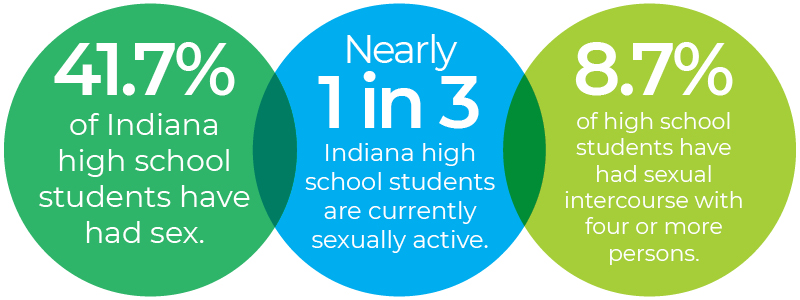
Teen Pregnancy in Vanderburgh County: A Comprehensive Analysis
Introduction
Teen pregnancy remains a significant public health concern in the United States, with far-reaching consequences for both the young mothers and their children. Vanderburgh County, Indiana, is no exception to this trend, facing a persistent problem with teen pregnancy rates that are higher than the national average. This article aims to provide a comprehensive analysis of teen pregnancy in Vanderburgh County, exploring its causes, consequences, and potential solutions.
Prevalence and Trends
According to the Indiana State Department of Health, the teen pregnancy rate in Vanderburgh County in 2020 was 26.5 births per 1,000 females aged 15-19, significantly higher than the state average of 21.2 and the national average of 18.4. The county has consistently ranked among the highest in Indiana for teen pregnancy rates over the past decade.
Causes
The causes of teen pregnancy are complex and multifaceted, but several key factors have been identified:
- Poverty and Economic Disadvantage: Teenagers living in poverty are more likely to become pregnant due to limited access to education, healthcare, and other resources.
- Lack of Education and Knowledge: Many teens lack comprehensive sex education and may not fully understand the risks and consequences of sexual activity.
- Peer Pressure and Social Norms: Teenagers who have friends or family members who are pregnant may be more likely to engage in risky sexual behavior.
- Mental Health Issues: Teens struggling with mental health issues, such as depression or anxiety, may be more vulnerable to engaging in unprotected sex.
- Substance Abuse: Alcohol and drug use can impair judgment and increase the likelihood of risky sexual behavior.
Consequences
Teen pregnancy has severe consequences for both the young mothers and their children:
- Health Risks: Teen mothers are at higher risk for premature birth, low birth weight, and other pregnancy complications. Their children are also more likely to have health problems, including developmental delays and chronic diseases.
- Educational Attainment: Teen mothers are less likely to complete high school and pursue higher education, limiting their future earning potential.
- Economic Instability: Teen mothers are more likely to live in poverty and rely on government assistance.
- Social Isolation: Teen mothers may experience stigma and isolation from their peers and family members.
- Intergenerational Poverty: Teen pregnancy often perpetuates a cycle of poverty, as children born to teen mothers are more likely to become teen parents themselves.
Solutions
Addressing teen pregnancy requires a comprehensive approach that involves multiple stakeholders:
- Comprehensive Sex Education: Schools and community organizations should provide comprehensive sex education programs that teach teens about the risks and consequences of sexual activity, as well as contraception and healthy relationships.
- Access to Healthcare: Teenagers should have access to affordable and confidential healthcare services, including contraception, prenatal care, and counseling.
- Economic Support: Programs that provide financial assistance and job training to teen mothers can help them achieve economic stability and break the cycle of poverty.
- Social Support: Community organizations and support groups can provide teen mothers with emotional support, mentorship, and resources.
- Collaboration and Partnerships: Effective solutions require collaboration between schools, healthcare providers, social service agencies, and community organizations.
Conclusion
Teen pregnancy in Vanderburgh County is a complex and persistent problem with far-reaching consequences. By understanding the causes and consequences of teen pregnancy, and by implementing comprehensive solutions that address the underlying factors, we can work towards reducing teen pregnancy rates and improving the lives of young mothers and their children.
Additional Statistics and Data
- In 2020, there were 310 teen births in Vanderburgh County.
- The teen pregnancy rate for Black females in Vanderburgh County is significantly higher than for White females (38.5 vs. 19.6 per 1,000).
- Teen mothers in Vanderburgh County are more likely to live in poverty (42.3%) than non-teen mothers (21.4%).
- Teen mothers in Vanderburgh County are less likely to have completed high school (52.3%) than non-teen mothers (85.7%).
References
- Indiana State Department of Health. (2021). Teen Birth Rates by County. Retrieved from https://www.in.gov/isdh/24873.htm
- Centers for Disease Control and Prevention. (2021). Teen Pregnancy. Retrieved from https://www.cdc.gov/teenpregnancy/
- National Campaign to Prevent Teen and Unplanned Pregnancy. (2021). The Impact of Teen Pregnancy. Retrieved from https://www.thenationalcampaign.org/our-work/teen-pregnancy/the-impact-of-teen-pregnancy